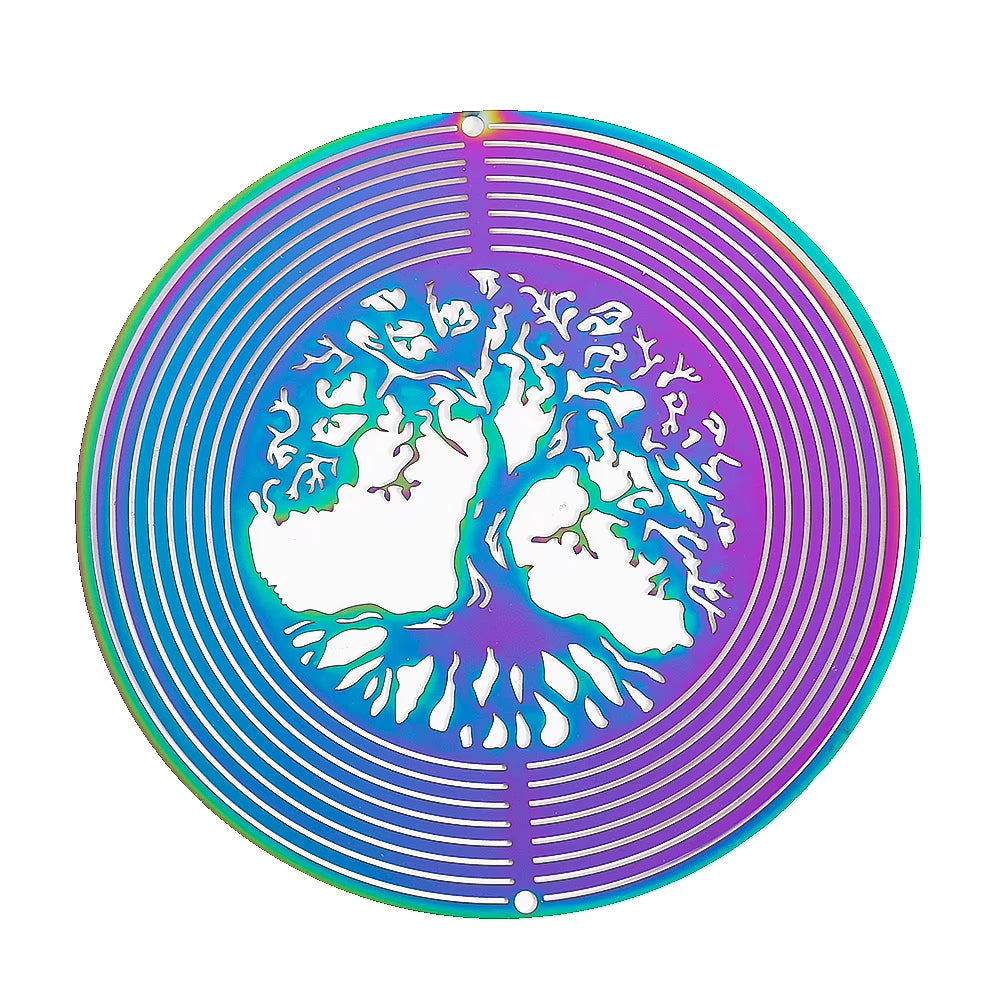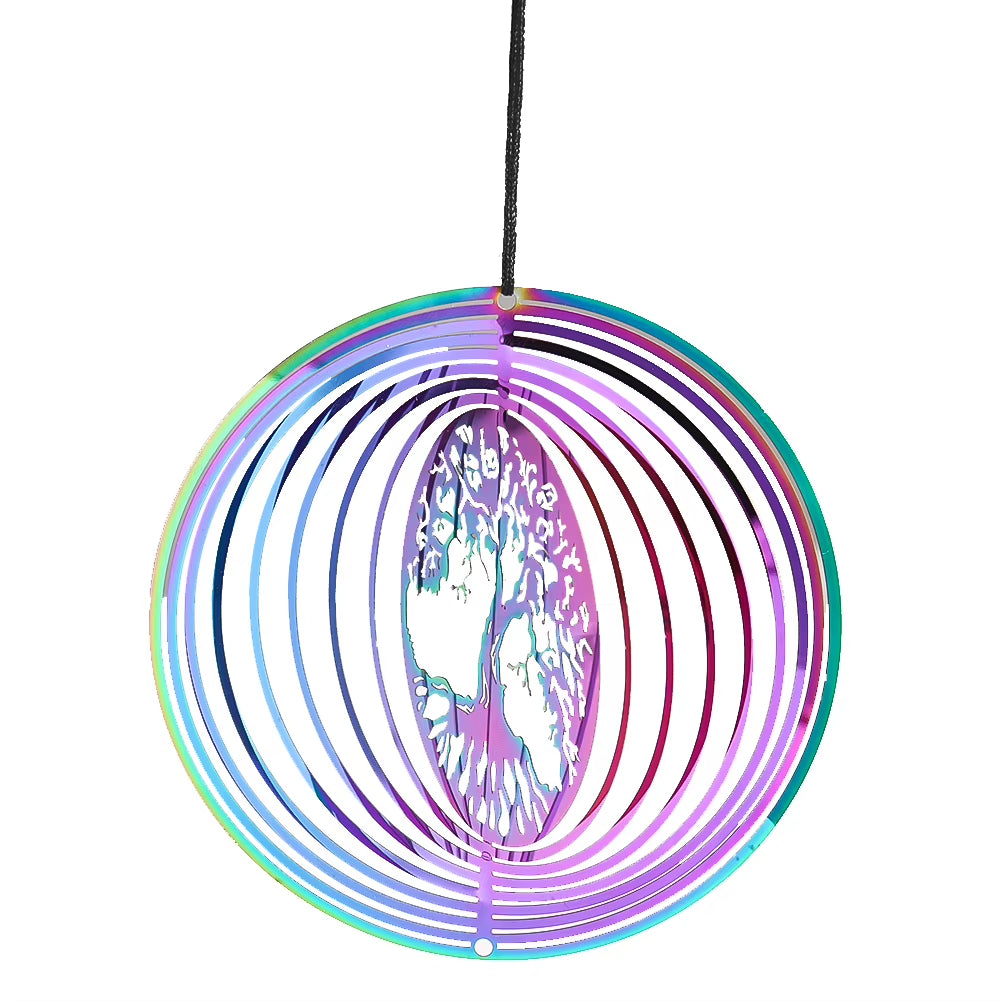The Tree of Life in the Bible is one of scripture's most powerful and enduring symbols, a silent witness to humanity's story from the dawn of creation to the promise of eternity. It appears in the first book of the Old Testament and the last book of the New Testament, representing a divine thread of hope, wisdom, and life itself. For spiritual seekers and students of the Bible, understanding this ancient symbol offers profound insights into God's relationship with humanity and the spiritual journey of personal growth.
This article explores the deep biblical meaning of the Tree of Life, tracing its path through scripture. We will uncover key verses, decode its rich symbolism, and discover its significance for our lives today, revealing how it continues to offer a blueprint for spiritual connection and wholeness.
What is the Tree of Life in the Bible?
In its essence, the biblical Tree of Life is a real tree mentioned in the Garden of Eden whose fruit granted eternal life to those who ate it. It first appears in Genesis 2:9, where it is planted by God alongside the Tree of the Knowledge of Good and Evil. Its purpose was simple and profound: to sustain the immortal life of humanity in perfect communion with their Creator. This tree was not merely a poetic metaphor in its initial context but a tangible source of divine life, representing God's life-giving presence and provision for Adam and Eve.
After the fall, access to this tree was barred, symbolizing humanity's separation from the source of divine life. However, the symbol did not end there; it was transformed, echoing through the wisdom of Proverbs and reappearing in Revelation as a promise of restoration and eternal communion with God.

The Tree of Life's Journey Through Scripture
The Tree of Life is not a static symbol; its meaning grows and deepens as it weaves through the biblical narrative. From a physical tree in a garden to a powerful metaphor for wisdom and a final promise of heavenly reward, its journey mirrors the story of redemption itself.
In the Beginning: The Tree in the Garden of Eden (Genesis)
The story begins in the Garden of Eden. In Genesis, God places two significant trees in the middle of the garden: the Tree of Life and the Tree of the Knowledge of Good and Evil. While Adam and Eve were free to eat from the Tree of Life, they were commanded not to eat from the other. By disobeying this command, they introduced sin and death into the world. As a result, Genesis 3:22-24 describes God guarding the way to the Tree of Life with cherubim and a flaming sword, "lest he put out his hand and take also of the tree of life, and eat, and live forever." This act was one of both judgment and mercy, preventing humanity from living eternally in a state of sin and separation from God.
A Symbol of Wisdom and Hope in Proverbs
Centuries after Genesis, the Tree of Life reappears in the Book of Proverbs, but its meaning is transformed. It's no longer a physical tree but a profound metaphor for the life-giving power of wisdom and righteousness. The verses present a clear path to a flourishing, blessed life:
- Proverbs 3:18: "She [Wisdom] is a tree of life to those who take hold of her; those who hold her fast will be blessed." Here, wisdom isn't just knowledge; it's a source of deep, abiding spiritual life.
- Proverbs 11:30: "The fruit of the righteous is a tree of life, and the one who is wise saves lives." This shows that a righteous life produces "fruit" that nourishes and sustains others.
- Proverbs 13:12: "Hope deferred makes the heart sick, but a longing fulfilled is a tree of life." This verse beautifully captures how the fulfillment of our deepest hopes revitalizes our spirit, much like the tree itself.
- Proverbs 15:4: "The soothing tongue is a tree of life, but a perverse tongue crushes the spirit." Words have the power to bring healing and life or to cause immense damage.
In Proverbs, the tree of life biblical meaning shifts to an attainable, spiritual reality. It becomes a symbol of the abundant life that comes from seeking wisdom, living righteously, and speaking with kindness—principles we can carry with us daily.

Tree of Life Enamel Alloy Bracelet - Unity and Strength
$24.90 $35.90
Wear the Tree of Life and carry its biblical meaning daily—connect to unity, growth, and spiritual strength.
Explore ProductThe Promise Restored: The Tree in Revelation
The journey of the Tree of Life culminates in the Book of Revelation, where it reappears in the new, restored creation. In Revelation 22:1-2, the Apostle John describes a vision of the New Jerusalem: "Then the angel showed me the river of the water of life, as clear as crystal, flowing from the throne of God and of the Lamb down the middle of the great street of the city. On each side of the river stood the tree of life, bearing twelve crops of fruit, yielding its fruit every month. And the leaves of the tree are for the healing of the nations."
This is the ultimate restoration. Access is no longer barred; it is the centerpiece of paradise. This tree provides constant nourishment (12 fruits) and complete healing, symbolizing the end of all suffering and the fullness of eternal life in God's presence. It represents the fulfillment of the promise lost in Eden, made accessible once again through Christ, who is often seen as the embodiment of the Tree of Life itself. For more on the scripture, you can explore resources like the Bible Gateway for in-depth study.

The Deeper Spiritual Meaning and Symbolism
Across the entire biblical narrative, the Tree of Life consistently symbolizes God's desire to impart life to His creation. Its spiritual meaning is multi-layered, representing several core divine principles that are relevant to our spiritual well-being.
- Divine Life & Immortality: Its primary role is to grant and sustain eternal life, representing life as God intended it—unending and in perfect fellowship with Him.
- Healing & Restoration: The leaves of the tree in Revelation are for "the healing of the nations," symbolizing holistic restoration—spiritual, physical, and emotional. "
- Wisdom & Righteousness: As seen in Proverbs, the tree represents the nourishing, life-giving fruit that comes from a life aligned with divine wisdom.
- Connection to God's Presence: From being in the center of the Garden to the center of the New Jerusalem, the tree is always located where God's presence dwells.
Understanding these themes helps us appreciate the Tree of Life not just as a historical or future object, but as a present symbol of the spiritual vitality we can seek through faith. For a visual and narrative exploration of this powerful symbol, the video below offers a compelling summary of its biblical journey.

Integrating the Tree of Life's Wisdom Today
While we no longer have access to the physical Tree of Life from Eden, its spiritual essence is available to us. The Bible teaches that true life is found in a relationship with Jesus, who said, "I am the way and the truth and the life" (John 14:6). He is the bridge back to the divine life that was lost.
Integrating the Tree of Life spiritual meaning into our daily lives is a practice of remembering and embodying its principles. It can serve as a powerful reminder to:
- Seek Wisdom: Engage in regular Bible study, meditation, and prayer to cultivate the wisdom that Proverbs calls "a tree of life."
- Nourish Others: Strive to be a source of life and healing in your words and actions, reflecting the tree's fruit and leaves.
- Hope in Restoration: In times of trial, hold onto the hope symbolized by the tree in Revelation—the promise that all things will be made new.
Surrounding yourself with symbols that echo this biblical truth can help keep these intentions at the forefront of your mind and heart, turning your living spaces into sanctuaries of peace and spiritual growth. The powerful symbolism has been studied for centuries, with institutions like the Biblical Archaeology Society exploring its historical and theological significance.
Bring Biblical Symbolism into Your Space

Metal Tree of Life Kinetic Garden Wind Spinner
$23.90
$30.90
Elevate your meditation or reading space with this kinetic Tree of Life spinner, inspired by biblical harmony. Learn more ➔

Prosperity Peridot Orgone Pyramid
$49.99
$59.99
Infuse your space with abundance—this orgone pyramid channels Tree of Life energies for biblical-inspired growth. Learn more ➔
Conclusion: A Symbol of Everlasting Hope
From the garden of Genesis to the glorious city of Revelation, the Tree of Life in the Bible stands as a profound symbol of God's unending grace and life-giving power. It is a testament to what was lost and, more importantly, what will be eternally restored. It is not just an ancient story but a living metaphor for the spiritual nourishment, wisdom, and healing that God offers to all who seek Him.
By exploring its verses and embracing its meaning, we can connect more deeply with the heart of scripture and find inspiration for our own journey of growth and faith. The Tree of Life reminds us that we are rooted in a divine story of redemption, with the promise of ultimate healing and everlasting life.
Frequently Asked Questions about The Tree of Life in the Bible
The Tree of Life is first mentioned in Genesis as a real tree in the Garden of Eden. Eating its fruit granted eternal life. After humanity's fall, access was blocked. It later appears metaphorically in Proverbs as a symbol for wisdom and righteousness, and finally in Revelation as a restored tree in the New Jerusalem, symbolizing eternal life and healing in God's presence.
In Proverbs 3:18, "She [Wisdom] is a tree of life to those who take hold of her," the Tree of Life is a metaphor for divine wisdom. It means that embracing wisdom leads to a blessed, flourishing, and spiritually abundant life, just as the original tree sustained physical life.
Proverbs 13:12 states, "Hope deferred makes the heart sick, but a longing fulfilled is a tree of life." Here, the Tree of Life symbolizes the profound revitalization and joy that comes from the fulfillment of a deep desire or hope. It represents renewal, satisfaction, and the restoration of a weary spirit.
This is described in the last chapter of the Bible, in Revelation 22:2. The verse depicts the restored Tree of Life in the New Jerusalem, stating that it bears "twelve crops of fruit, yielding its fruit every month." This symbolizes constant, abundant, and perfect spiritual nourishment in eternity.
The primary difference is access. In Genesis, the Tree of Life is on Earth, and access to it is lost after the Fall to prevent humanity from living eternally in sin. In Revelation, the Tree of Life is in heaven (the New Jerusalem), and access is fully restored to the redeemed, symbolizing a permanent return to eternal life and communion with God, where its leaves also provide healing.







